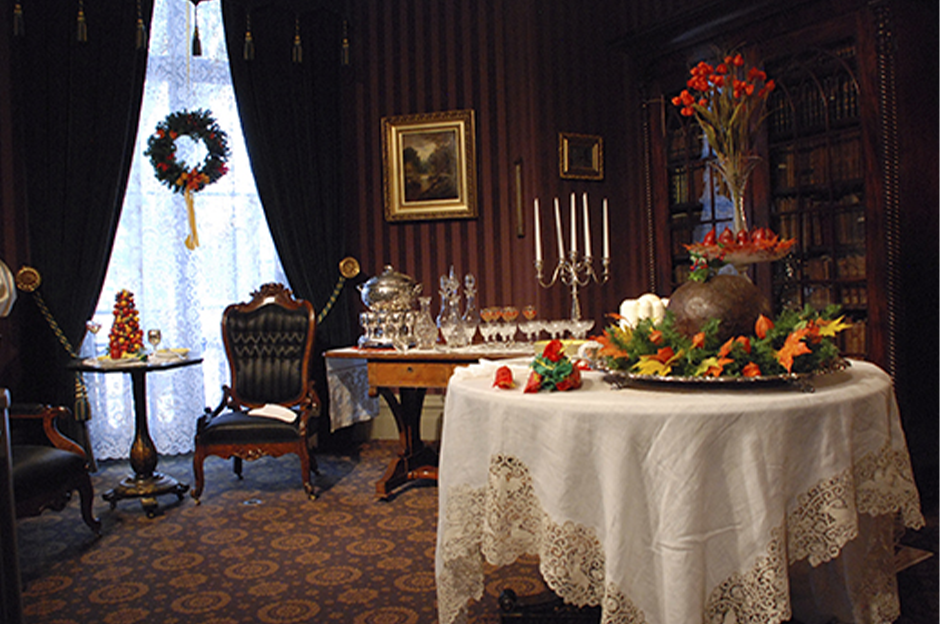Bountiful tables of sweets, savories, and bubbly will be overflowing with holiday cheer as delectable Victorian-era Christmas meals are depicted in the exhibition A Taste of the Holidays, this year’s annual Victorian Yuletide installation in the Museum’s period rooms.
Following the advice of Mrs. S. T. Rover in The Ladies’ Home Journal (December 1907), a table is set for breakfast in the bedroom. Mrs. Rover explains that “For the home breakfast, I think it is well to place everything on the table at the beginning.” This casual style of dining, common to us today, was referred to as á la française. Soft-boiled eggs, fish, toast, rolls, butter pats, marmalade, and tea will be “served” using the Williams’ family holiday tea service. As 19th-century household advice writer Mrs. Beeton noted, tea is “the cup that cheers but not inebriates.”
Helen Munson Williams’ 1874 holiday menu is the model for the bountiful display in the dining room where turtle bean soup, oysters on the half shell, and pigeon pie are being “served.” The recipe for a pigeon pie, a holiday favorite, called for two to three pigeons baked with ham, eggs, and salt and pepper in a puff pie crust. “Clean three of the feet, and place them in a hole made in the crust at the top: this shows what kind of pie it is,” recommended Mrs. Beeton. Unlike the less formal breakfast meal, in the dining room servants offered the food to diners á la Russe. Without the clutter of serving dishes on the table, a dramatic Christmas tree-and-mirror centerpiece takes center stage.
The parlor and library are set for a cheerful champagne and dessert party. Victorians delighted in recipes for every sort of sweet treat imaginable. All one needed was is a few dozen eggs, a pound or two of butter, and lots and lots of sugar. The idea of plum pudding as a Christmas dish rose to prominence during the Victorian era, as seen in Charles Dickens’ A Christmas Carol (1843). Mrs. Cratchit’s plum pudding was declared by her husband to be “the greatest success achieved by Mrs. Cratchit since her marriage.”
Flavorful punch would also have been served at an evening event. The term punch is derived from the Hindustani panch or pañc, meaning “five,” as punch typically was comprised of five main ingredients: alcohol, water, lemons, sugar, and spices. Every host, however, concocted his own derivation of the recipe using spiced wines, rums, ports, or other spirits, and served the blend from luxurious silver and crystal punch bowls and goblets.
The Museum’s collection of toys, games, and dolls, many of which were owned by Rachel and Maria Williams Proctor, will also be on view. The decorations in the dollhouse, an 1856 Christmas gift to the Williams sisters, will parallel the period rooms, right down to miniature versions of the fanciful Christmas foods!
Savor the holidays and be inspired by 19th-century cuisine with a visit to the Museum’s period room settings in Fountain Elms. A Taste of the Holidays is on view through December 31.
Public tours are available from November 28 through December 31 on Saturdays at 2 p.m. To schedule a private group tour, contact 315-797-0000, ext. 2170.



